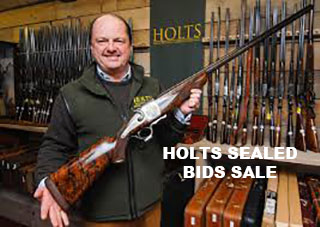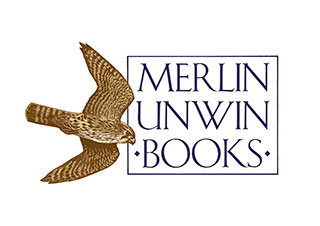Brand value has always had a key place in the likely cost one has to pay for any given gun, all other factors being equal. The classic request from a caller is someone wanting a ‘Holland & Holland, Purdey or Boss’. Many of these callers could not tell one from another at five yards but the magic name has them captivated. Other makers, whose guns certainly equal, if not better, many of those by the ‘top tier’ names just don’t appeal in the same way to a large section of the collecting or dabbling fraternity.
Makers like Grant, Lang, Greener, Dickson and Westley Richards have always sat back slightly from the kudos associated with the big three. However, times do change, often slowly, but there has been something of a shift this past decade and the wares of Edinburgh’s most famous gun maker, John Dickson (now, sadly, no longer in the city) have become highly desirable. We may be witnessing a surge, akin to that which pushed the prices of big bore guns through the ceiling a few years ago (only to correct once the frenzy died down).
I have noticed a growing appreciation of Dickson guns, especially from American buyers, for some time now. Twenty years ago a good Dickson ‘round action’ was £5,000, while a comparable Purdey side-lock was £10,000 -£12,000. The round action guns began to close the gap in the interim and are now closing with best London side-locks. They were once seen as something between a boxlock and a side-lock but there is greater appreciation for their qualities today. A decent 12-bore Dickson round action today will be somewhere between £8,000 and £12,000.
Dickson’s records are well preserved and fairly detailed. That means quite a lot of factual information can be laid out and that is advantageous to collectors. Especially American collectors, who like to deal in absolutes. If, for example, you know that a maker made five 16-bore hammer guns, and you are looking at one of them, you have some idea of the rarity of that item and therefore a better idea of it’s trading attractiveness to other collectors. Of course, having ‘the only’ example of a particular type of gun adds bragging rights and people will pay for those. Such was the case with a Dickson that sold at Holt’s in their June auction this year.
The gun was an unusual ‘skeleton bar’ version of the famous trigger plate gun, for which Dickson is best known. Added to that, it was a side-lever, which is also very unusual. Then, the gauge added more interest still: it was a 16-bore. Dickson’s records indicate that only thirteen ‘skeletal’ round action guns are known to have been made. Three of these were 16-bores. How many of those were side-levers? One colleague thinks this is the only example. Another tells me that he knew of one more that belonged to a friend of his in the 1970s. So, there may be two of them.
So far, the rarity we have described adds points to the gun on the desirability front. What also counts for a lot is original quality, then current condition. Dickson guns are invariably of very high quality and this one is no exception. Graceful, well fitted in all the intricate details, with dark, figured wood, tasteful engraving and a pleasing flow of lines, melding metal and wood into a sleek, comfortable-feeling shotgun.
The condition, for a gun made in October 1883, is still remarkably good.The chequer remains unmolested, there is no shrinkage of wood away from metal where the two join. While the action has no original finish left, it is still sharp and has been spared the polishing that so many old guns have suffered.
The Dickson was built for Lt. Col. John F. Hathorn, of Castlewigg House, Wigtownshire (now a ruin after a catastrophic 1933 fire). Fortunately, the gun was not in residence at the time!
There are witness marks in the wood over the bar, indicating that internal screws have rusted and discoloured; and weakened the wood around their threads, though the wood is not cracked under the bar, where many wood-bar guns do crack along the grain. The is, however, a crack in the hand, along the top strap, just behind the location of the hand pin. It could be repaired properly by a good finisher. The gun is mechanically sound and operational and would respond well to a sympathetic restoration.
The ‘but’ in the evaluation, which I’m sure readers were anticipating, refers to the barrels. When David McKay Brown was working at Dickson’s in the late ‘60s, the gun came into the shop and found its way into his ownership. The barrels are replacements unsigned, which McKay Brown had fitted in 1970. The originals were 27 1/2”, the replacements are 28”.
Generally, in collecting circles, originality is an important factor. Non original barrels would normally affect the value of a gun significantly downwards. Barrels that are neither original nor ‘by the maker’ will do so even more surely. The other factor in the gun’s disfavour is that it is not an ejector model. Ejector guns generally do better than non-ejectors.
When the Dickson appeared in Holt’s catalogue, it immediately started getting attention from enthusiasts. One American client was considering buying it to re-stock (which I advised was un-necessary and undesirable). The estimate was £3,000- £5,000. Auctioneers are often accused of under- estimating guns but I think Holt’s got this spot-on. If someone had walked in and put it on my desk asking to sell it, I’d have paid them £3,500, £4,000 at a push.
In my estimation, the gun needed £1,500 spent on it and when retailed in good order, cased, it would have gone up for £7,500. I would have thought a ‘punter’ looking to buy it for himself, rather than as a commercial proposition, may have paid more for it and then invested in the restoration. In the event, I had one client who instructed me to bid up to £7,000 in the room. That would leave him looking at a cost, overall, of about £10,000 to get the restored gun in his hands, ready to go shooting.
The bidding eventually stoped at a whopping £20,000. That is £26,000 by the time you pay the auctioneer. For a Scottish, non-ejector with replacement barrels! This shows the value of rarity and a healthy collector market for a particular brand of gun. It also shows the results that can be achieved by auctioneers beyond what the private market can deliver. If you have very rare or unique items, the auction room can sometimes deliver a bidding frenzy that seems out of step with what most of us would consider reasonable.
That is the way of it when two or more bidders desperately want a particular item and know that if they don’t buy it on the day, they will probably never get the chance again. So, next time you hear Nick Holt telling people he has a small Dickson, you can be sure he is doing so with a smile on his face.
Published by Vintage Guns Ltd on (modified )




